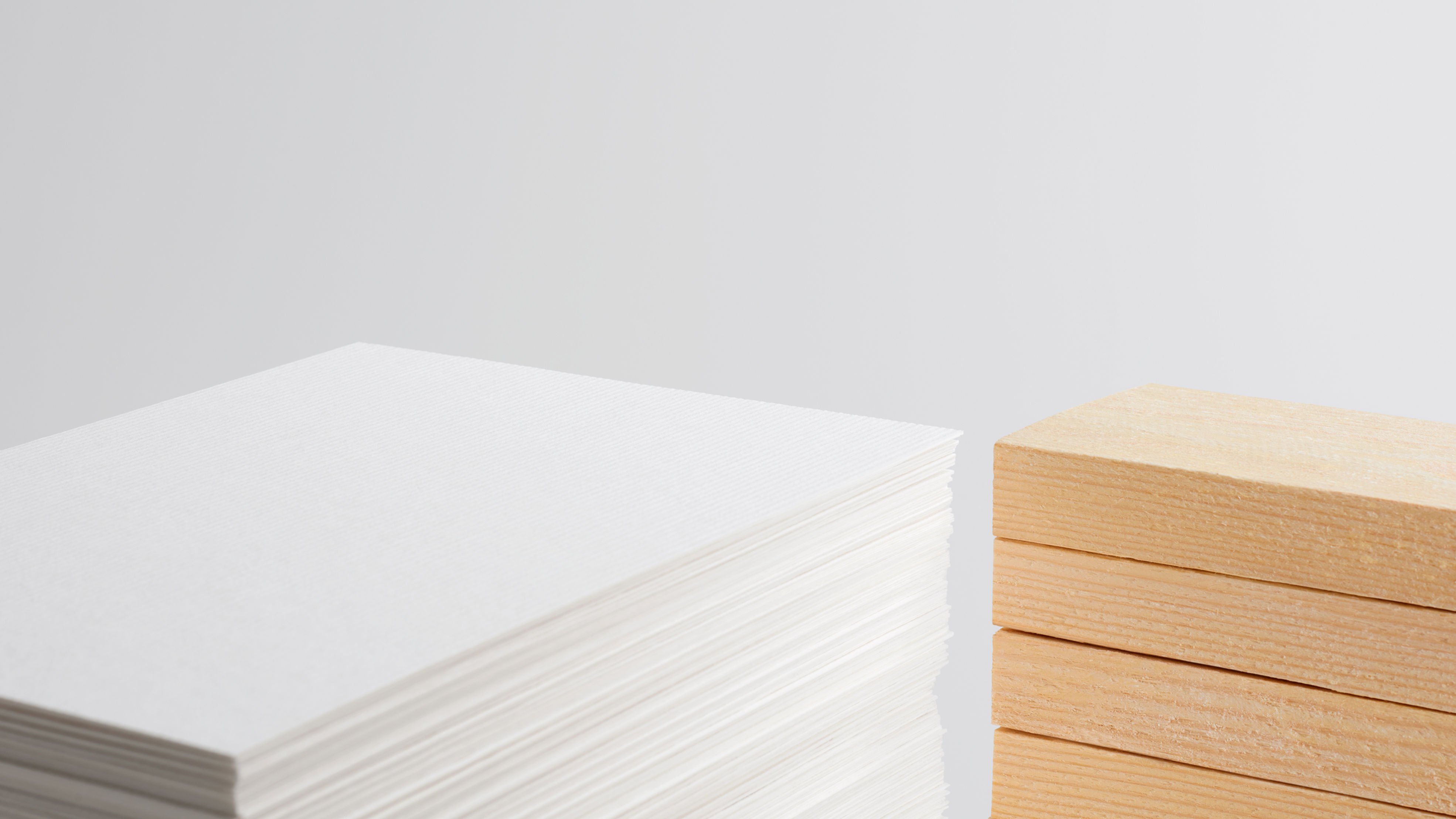Targeting completely fossil-free raw materials
In 2023, the share of fossil-free raw materials within Metsä Fibre as a whole was nearly 100% (pulp 100% and sawn timber 99.99%).
We are already very close to fully fossil-free raw materials and packaging materials because pulp and sawn timber are produced from renewable wood raw material, and pulp sheets are used to wrap pulp bales. Only the sawn timber wrappings used at sawmills are made of fossil plastic. However, we are looking for a more sustainable solution for this in close cooperation with various operators.
Developing fossil-free wrapping for sawn timber from completely new materials is a challenging task. The wrapping must protect products from dirt, moisture and ultraviolet light, as well as withstand mechanical stress and protect the products from potential damage during transportation. In addition, the wrapping must have a friction-producing surface that prevents the bundles from moving and also allows walking on them in slippery conditions. Fossil-free wrapping may be fibre-based, bioplastic or combinations of both.
Renewable and recyclable wood is the raw material of the future. It can be used to replace various fossil materials and make consumption more sustainable. Consumers’ environmental awareness is increasing the demand for wood fibre-based products globally.
For example, fresh fibre paperboard made of pulp can be used to replace fossil-based packaging materials. Alongside traditional forest industry products, wood-based bioproduct innovations are also being created all the time.
We increase the number of wood-based products that store carbon for a long time
Metsä Group aims to increase the amount of carbon stored in its products by 30 per cent by 2030. This goal can be achieved by producing wood products with a long life that store carbon throughout their life cycles.
Wood products have a unique ability to store carbon for up to hundreds of years. For example, the longer wooden buildings are in use, the longer the carbon is kept out of the atmosphere. The biggest growth opportunities of wood construction lie particularly in multi-storey construction and public sector construction. The new wood construction is based on industrially manufactured materials and large elements, from which houses can be assembled quickly. Concrete parts can also be replaced by wood.
Sawn timber acts as carbon storage throughout its life-cycle. One cubic metre of wood binds around 1,000 kilograms of carbon dioxide. We are actively developing our sawn timber production and have developed the Future Sawmill concept to improve the efficiency of the sawmill business. Its first application is the Rauma sawmill, which was started up in 2022. Its performance at all process stages is unprecedented in the industry.
Metsä Fibre’s measures towards 2030:
- We transition to fossil-free materials in all our raw materials and packaging materials.
- We increase the amount of wood-based products that store carbon for a long time.
Indicators by the end of 2030
- 100% fossil-free raw materials and packaging materials
International Sustainable Development Goals (SDGs) related to the target:

